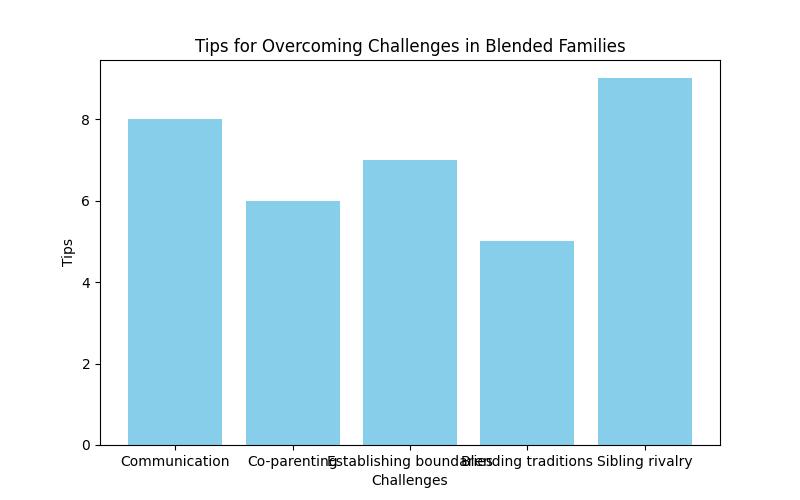Are you struggling to blend families from different cultural backgrounds? Blending families is never easy, and it can become increasingly complex when cultural differences are involved. In this article, we will discuss the unique challenges that can arise when blending families in a multicultural context, offer strategies for overcoming these challenges, highlight success stories of blended families, and provide resources and tips for maintaining a happy and healthy blended family.
Defining Blending Families in Multicultural Relationships
Blending families refers to the process of integrating families into a single unit. This could involve merging households, co-parenting with ex-spouses, and navigating cultural differences in parenting styles, languages, religions, and traditions. Blending families in a multicultural context refers to the process of integrating families from different cultural backgrounds into a single unit. It is a complex and ongoing process that requires patience, understanding, and open communication.

Navigating Challenges of Blending Families in Multicultural Relationships
- Unique challenges of blending families in a multi-cultural context include languages, religions, and traditions.
- Strategies for overcoming challenges include learning about cultures, finding common ground, and open communication.
- Success stories and resources for blended families are available for those seeking help.
Challenges of Blending Multicultural Families
Blending families in a multicultural context can present unique challenges that may not be present in other types of blended families. Some of the challenges that may arise include differences in languages, religions, and traditions. For example, one partner may come from a culture where it is customary to live with extended family members, while the other partner may come from a culture where it is more common to live independently. Additionally, building connections and bonding can be more difficult in a multicultural context due to differences in communication styles and social norms. Overcoming cultural barriers can also be a challenge, as cultural differences may lead to misunderstandings and disagreements.

Strategies for Overcoming Challenges
Despite the challenges that may arise when blending families in a multicultural context, there are strategies that can help couples overcome these obstacles. One strategy is to learn about each other’s cultures by attending cultural events, trying new foods, and engaging in cultural activities together. Finding common ground is also important, as it can help couples bridge cultural differences and build connections. Being open to compromise is another important strategy, as it can help couples find solutions that work for both partners and their families.
It is also important to seek out resources and support. This could involve reading books, joining support groups, or seeking counseling services. These resources can help couples navigate the challenges of blending families in a multicultural context.
| Success Story | Cultural Backgrounds | Key Strategies |
|---|---|---|
| The Lee Family | Korean and American | Prioritizing open communication, compromising, finding common ground |
| The Patel Family | Indian and British | Learning about each other’s cultures, attending cultural events, seeking counseling services |
| The Wong Family | Chinese and Australian | Setting clear boundaries, establishing routines, prioritizing open communication |

Success Stories of Blended Families
Personal stories or anecdotes from individuals who have successfully blended families in a multicultural context can provide inspiration and hope for couples who are struggling to navigate the challenges of blending families. These stories can demonstrate that blending families in a multicultural context is possible, and that with patience, understanding, and open communication, couples can build strong, authentic connections.
Resources for Blended Families
There are many resources available to couples who are blending families in a multicultural context. Books such as “Integrating Traditions” provide guidance and practical advice for navigating the challenges of blending families. Support groups, both online and in-person, can provide a sense of community and support. Counseling services can also be beneficial, as they can offer professional guidance and support.
Personal Story: Overcoming Language and Cultural Barriers
When Maria and her husband, Juan, got married, they knew that blending their families would come with unique challenges. Maria was from Mexico and spoke mostly Spanish, while Juan was from the United States and spoke mostly English. They also had different cultural traditions and expectations for family dynamics.
At first, communication was difficult. Maria struggled to express herself in English, and Juan’s limited Spanish made it hard for him to understand her. They found themselves frustrated and misunderstood.
But they were determined to make their blended family work. They started taking language classes together and practicing at home. They also made an effort to learn about each other’s cultures and traditions, celebrating holidays and cooking meals together.
Slowly but surely, their efforts paid off. They were able to communicate more effectively and build a stronger bond with each other and their children. Now, they are proud to have a blended family that is rich in both Mexican and American culture.
Maria and Juan’s story is a testament to the power of patience, dedication, and open-mindedness in the face of cultural and language barriers. By putting in the effort to learn and understand each other, they were able to create a successful blended family.

Tips for Maintaining a Successful Blended Family
Maintaining a successful blended family requires ongoing effort and attention. Some tips for maintaining a successful blended family include setting clear boundaries, establishing routines, and prioritizing open communication. Setting clear boundaries can help prevent misunderstandings and disagreements, while establishing routines can help create a sense of stability and predictability. Prioritizing open communication is also important, as it can help couples address issues as they arise and prevent them from escalating.
Importance of Patience and Understanding
Blending families in a multicultural context requires patience and understanding. Adjusting to a new family dynamic can be challenging, and it may take time for everyone to adjust. Creating a happy and healthy blended family requires ongoing effort and attention, but with patience and understanding, it is possible to build strong, authentic connections.
Conclusion
Blending families in a multicultural context is a complex process that can present unique challenges. However, by learning about each other’s cultures, finding common ground, and seeking out resources and support, couples can overcome these challenges and build strong, authentic connections. It is important to prioritize open communication, set clear boundaries, and establish routines in order to maintain a successful blended family. With patience and understanding, it is possible to navigate the challenges of blending families in a multicultural context and build a happy and healthy family.
Frequently Asked Questions
What are some challenges when blending families?
Balancing different cultural traditions and parenting styles.
How can multi-cultural couples make it work?
Open communication and respect for each other’s cultural differences.
What are some successful blending family stories?
Couples who prioritize the well-being of the children and embrace diversity.
Who can benefit from multi-cultural dating success stories?
Anyone interested in learning about successful blending family stories.
What are some tips for introducing new partners to children?
Take it slow, involve children in activities, and prioritize their feelings.
What if family members object to the blending of cultures?
Open communication and education on the benefits of diversity can help overcome objections.




